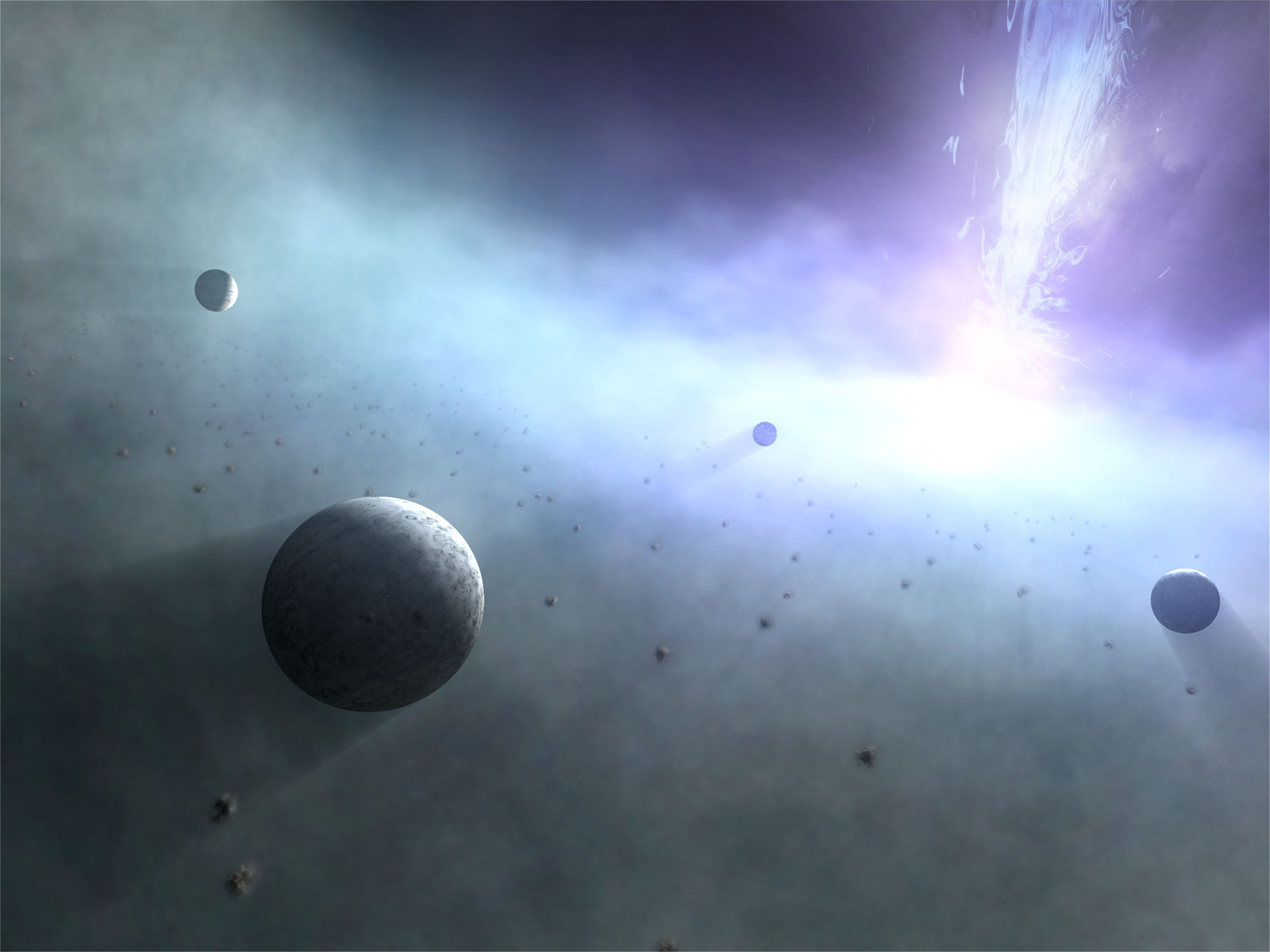A black-hole Sun: planets could also form around black holes
What does a builder of worlds need to form planets? A protoplanetary disk made out of a suitable material in which differences in density can develop, and an object at the center of the system that acts as a common center of gravity and uses its force of attraction to prevent the cloud of material from floating off into infinity. Until now it had been assumed that these conditions were met primarily by stars. But apparently much more exotic planetary systems are also conceivable, as Japanese researchers have now described in a study.
The scientists took a closer look at the conditions around black holes – and not just any black holes, but active galactic nuclei in particular. These are black holes that have masses of millions of solar masses and interact with their surroundings. Just like young stars, dust disks can form around them in gigantic dimensions. Just the dust disk itself can reach a mass of 100,000 Suns, corresponding to about a billion times the mass of a normal protoplanetary disk. Thus, there is plenty of material, and there’s also an energy source at the center.
“Our calculations show that tens of thousands of planets with 10 times the mass of the Earth could be formed around 10 light-years from a black hole,” says Eiichiro Kokubo, who studies planetary formation at the National Astronomical Observatory in Japan. “Around black holes there might exist planetary systems of astonishing scale.”
So that planets could actually grow, dust particles must be able to come together and form larger clumps. That works, however, only if the intense radiation emitted from the interior of the accretion disk of the active black hole is blocked so that cooler regions can form. And that is just what happens according to the researchers’ simulations. Therefore, over a time frame of a few hundreds of millions of years, planets could also form there.
Nobody has yet found such planets, and currently nobody has any idea how we might be able to find them in the future. The energy of active galactic nuclei overshadows all smaller objects orbiting around them. If the shielding by the orbiting disk is good enough, the planets might even have relatively pleasant conditions. But the skies would probably look nothing like anything we’re used to.
